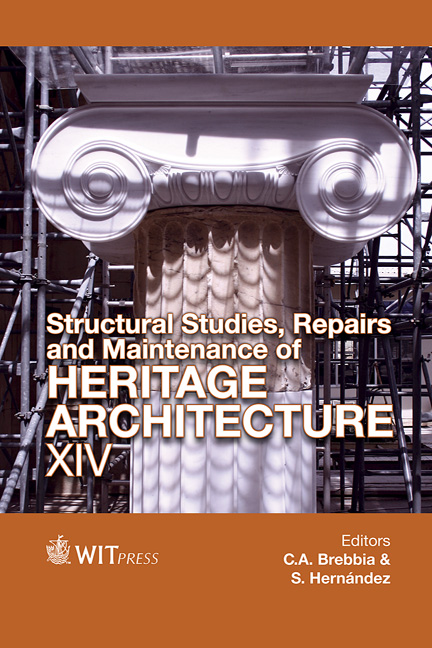Restoration Conservation Works Carried Out At The Historical Malabadi Bridge, Turkey
Price
Free (open access)
Transaction
Volume
153
Pages
12
Page Range
799 - 810
Published
2015
Size
2,340 kb
Paper DOI
10.2495/STR150661
Copyright
WIT Press
Author(s)
H. Sert, S. Yılmaz, M. Elbir, E. M. Partal, H. Demirci, A. Avşin, M. Nas, G. S. Turan
Abstract
It is one of the primary tasks of the General Directorate of Highways (KGM) to repair and maintain historic bridges which are of great importance in view of our cultural history in accordance with the projects to be developed or caused to be developed, apart from the recently constructed roads and bridges. Pursuant to the inventory records, it has been observed according to their period of construction (as of December 2014) that there are a total of 1772 bridges in our country grouped according to their method of construction as follows: stone (1682), wooden (29), iron (30), reinforced concrete (31). The historical bridges, the majority of which are located on 1st degree seismic zones and have proven to be durable for centuries, are considered to serve for a long time in case a relationship between the original construction techniques and soil-foundation-river is established. In this context, during the execution of the restoration works which should be carried out in accordance with the least intervention principle, it is of great importance to define the original construction systems of the bridges and their characteristics material wise. In the context of this particular paper, the restoration, conservation works carried out from 2009 through to 2013 by the General Directorate of Highways, at the historical Malabadi Bridge, located on the Batman River in the District of Diyarbakır and constructed in the Seljuk period will be discussed. It is the only stone arch bridge with the largest span in the world surviving to date, having a pointed arch in 40.86 m spans.
Keywords
historical bridges, Malabadi Bridge, restoration, conservation




